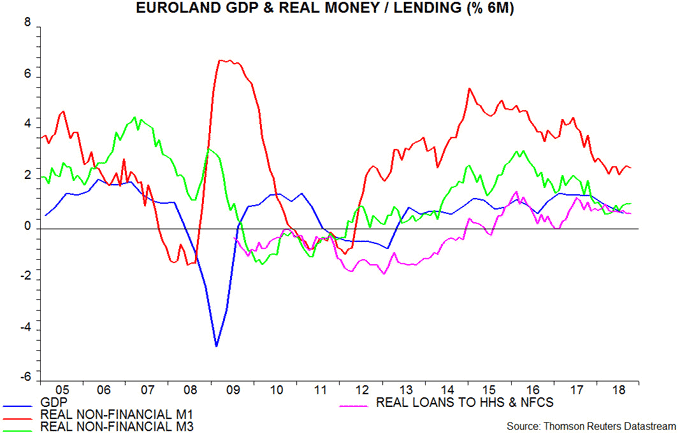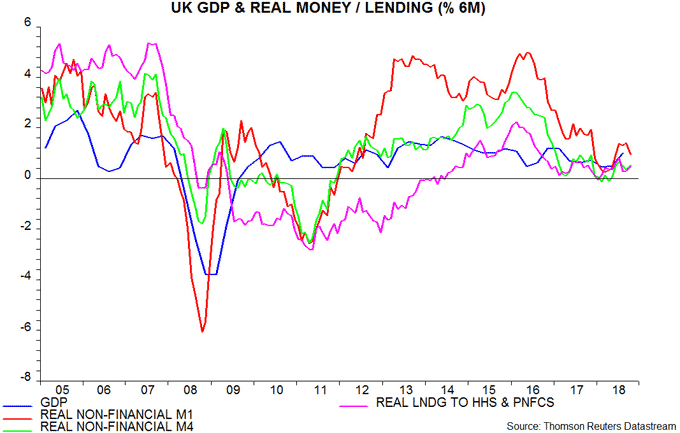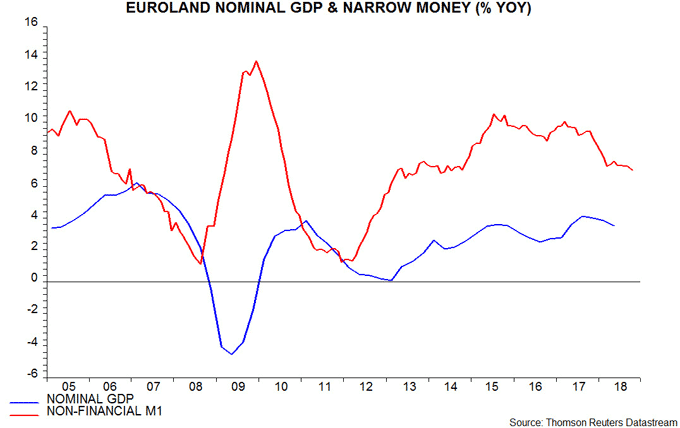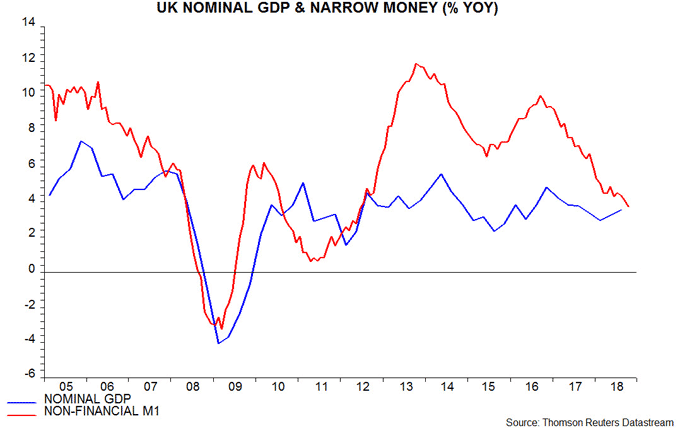Euroland / UK money trends have stabilised in recent months, suggesting that economic prospects remain weak but have not deteriorated further.
Euroland GDP rose by 0.2% in the third quarter and PMI survey compiler IHS Markit claims that November flash results released last week are consistent with a fourth-quarter increase of 0.3%. Second-half growth, therefore, may have averaged 0.25% per quarter, below the ECB staff’s September central forecast of 0.4%.
Slower economic growth was signalled by a weakening of monetary trends in late 2017 / early 2018. Six-month growth rates of real narrow and broad money, however, have recovered slightly since March / April, with little change in October – see first chart. Allowing for the usual nine-month lead, a reasonable expectation is that GDP will grow by 0.3% per quarter in the first half of 2019. The previous ECB staff projection was for quarterly growth of 0.5% but this is likely to be scaled back to 0.4% or less in the December update.

UK real narrow and broad money growth also bottomed in early 2018, recovering into mid-year before slipping back more recently – second chart. Levels are lower than in Euroland. GDP growth of 0.6% in the third quarter was anomalously high and a downshift to 0.3% per quarter or less is plausible over coming quarters.

While six-month growth rates of real money have stabilised, annual growth of nominal narrow money continues to subside in both Euroland and the UK, signalling a likely future slowdown in nominal GDP – third and fourth charts. This prospect suggests that monetary policies should be on hold or shifting to an easing bias. With economic growth undershooting its forecast significantly, and headline inflation about to fall sharply following unexpected oil price weakness, there are strong grounds for the ECB to suspend its previous plan to halt QE at end-2018.


The 2008-09 and 2011-12 Euroland recessions were preceded by a significant divergence of narrow money trends across countries. Reassuringly, no such divergence is yet apparent – fifth chart. Italian real narrow money growth, while below average, has held up better than expected following the rise in yield spreads. The most notable recent development has been a further slowdown in Germany, where real money growth is on a par with Italian – economic prospects may be similarly weak in the two countries.
